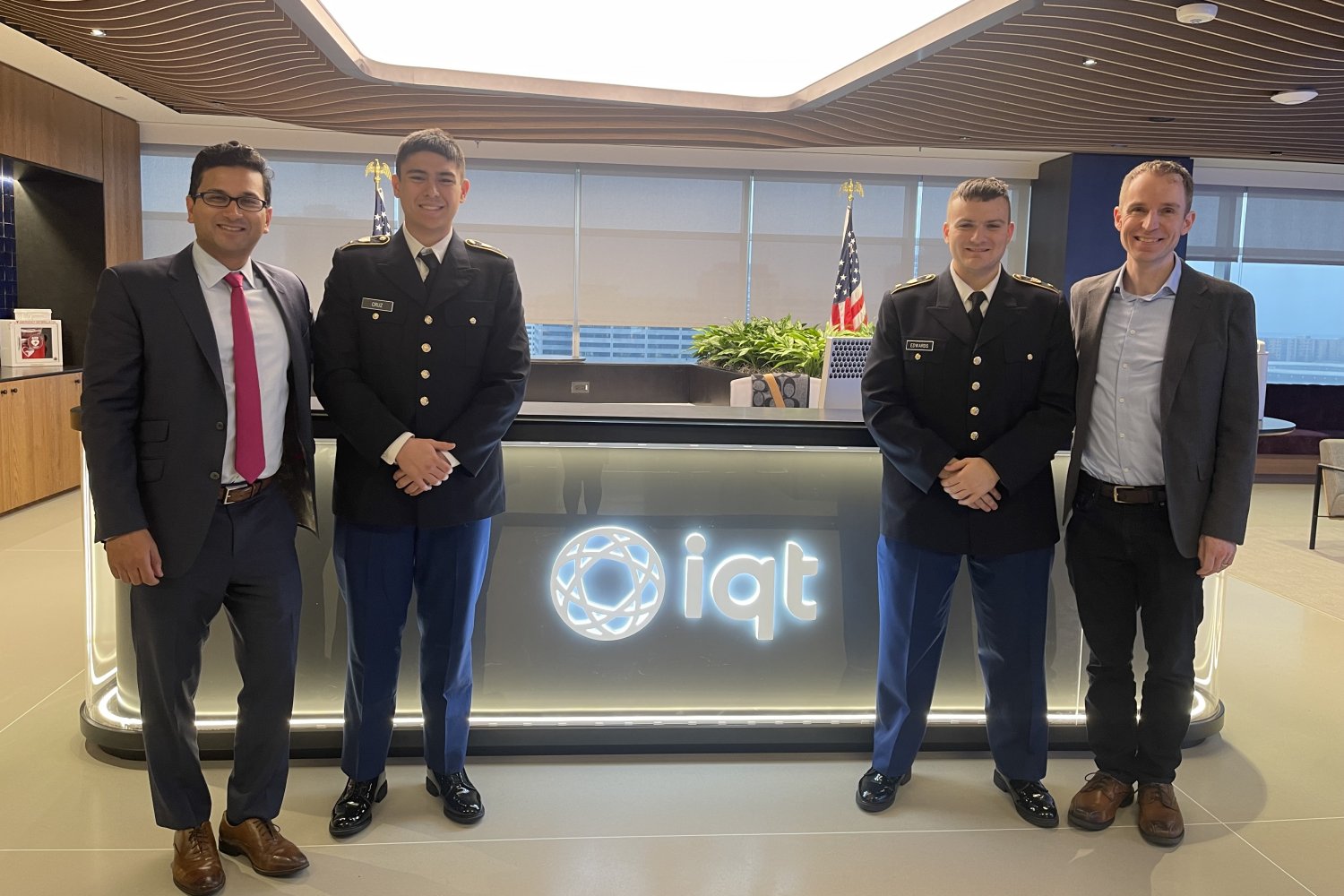
Pursuing an Undergraduate Research Opportunity Program project (or two or three) is a quintessential part of the academic experience at MIT. The program, known as UROP, allows students to be “shoulder to shoulder” with faculty, graduate students, and affiliated researchers in MIT’s labs.
Given the plethora of research options and disciplines — everything from getting a crash course in advancing quantum computing to developing neuroprosthetics — it’s no surprise that over 90 percent of undergraduates end up doing a UROP by the time they graduate.
The half-century-old program continues to evolve, adapting to student interest. Consider the experience of rising senior Alexander Edwards, a nuclear and mechanical engineering student and cadet in the Army ROTC program. The Alabama native leveraged his military training thanks to a new fellowship with the Institute for Soldier Nanotechnologies (ISN), an endeavor in which MIT, the U.S. Department of Defense (DoD), and industry partners work together to develop technologies that advance the protection, survivability, and mission capabilities of the U.S. Armed Forces. That fellowship is thanks to a gift of alumnus and ROTC graduate Aneal Krishnan ’02, who commissioned as an infantry officer in the U.S. Army. Here, Edwards and Krishnan describe the unique UROP experience and offer advice for future students.
Q: What was special about having a UROP focused on the challenges that a soldier in the field might face, such as the decades-long challenges of managing excess weight while also having proper ballistic protection?
Edwards: Having a UROP specifically designed for MIT ROTC cadets has allowed me to grow my technical skills while also helping contribute to national defense. The ISN works on an array of different interesting research projects related to defense technologies in any and every STEM discipline.
Team members collaborate on basic research to create new materials, devices, processes, and systems, and on applied research to transition promising results toward practical products useful to the war fighter. U.S. Army members at the ISN also give guidance on soldier protection and survivability needs and evaluate the relevance of research proposed to address these needs.
These collaborations help identify dual-use applications for ISN-derived technologies for firefighters, police officers, other first responders, and the civilian community at large.
Krishnan: The ISN was founded at MIT in 2002, and since its founding, the ISN’s research has been the genesis of over 140 patents, more than 50 startups, and dozens of major transitions of fieldable products. Through the MIT ROTC/ISN fellowship, the ISN benefits from the work of exceptional science and engineering students from MIT, who will also be future military leaders and can bring a real-world perspective to their work. The ROTC cadets benefit by pursuing research as part of their degree in areas in which they are passionate, and that will benefit them in their endeavors after graduation. An overarching success of this fellowship is that there is now a connection between ROTC and MIT’s DoD labs that did not exist in my time as an undergraduate. As a tangible success in this regard, in March 2024, Lt. General Maria Barrett, the commanding general of U.S. Army Cyber Command, conducted a visit at MIT coordinated by both ROTC and the ISN, further elevating the profile of the Institute amongst the DoD top brass.
Q: What was your specific project?
Edwards: My project for the past year has been related to calculating the losses on a radio-photovoltaic thermo-nuclide generator (RTG), also known as a nuclear battery.
My classmate, fellow Army ROTC cadet and fellowship recipient rising junior William Cruz, worked with nanocomputing and piezoelectric fibers to create heartbeat-sensing clothing. He and I can attest that both projects have been incredibly fulfilling, both personally and professionally.
Alongside the UROPs, Mr. Krishnan took us on a day trip in January to Washington D.C., where we were treated to a host of amazing networking opportunities at an array of organizations that seek to transition innovation out of the lab and into the front lines such as Silicon Valley Defense Group, JP Morgan, Peraton, and from In-Q-Tel, the global, not-for-profit strategic investor for the U.S. national security community and America’s allies, hosted by fellow MIT alumnus David LoBosco ’02.
Q: What lessons or takeaways did you gain from this experience? What advice might you share with other students?
Edwards: My main takeaways from all these meetings were, first, the importance of proper communication between the private sector and the government, something that has been lacking of late, and secondly, how I may be able to apply my technical background to consulting, investment, or many other fields.
Overall, I would recommend this program to future MIT ROTC cadets, and both Cadet Cruz and I are exceedingly grateful to Mr. Krishnan and the ISN for the opportunity.
Krishnan: Cadets Edwards and Cruz will now be able to share their experiences with the next class of prospective cadet researchers, thereby increasing the fellowship’s reach and impact. Future initiatives are to expand the fellowship to MIT’s Air Force and Navy ROTC programs, schedule more visits of senior military leaders to both ROTC and ISN, and connect fellowship recipients with ISN startups for career opportunities. And for my part, I’m incredibly fortunate to have met such outstanding Americans as cadets Edwards and Cruz. I’m excited to see where life takes them and hope to be a mentor along the way.
